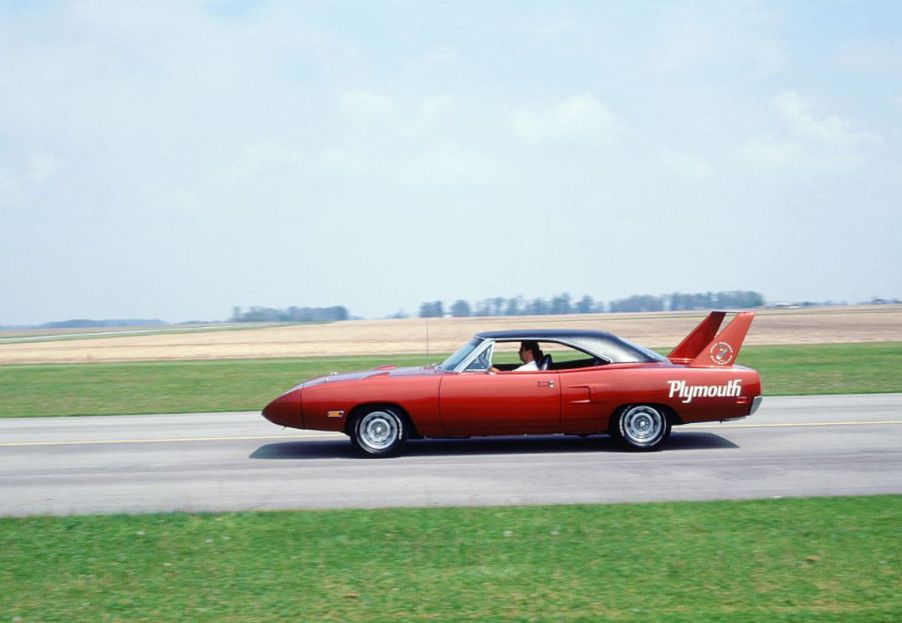
Plymouth Superbird: History and Legacy
In the late 1960s, NASCAR rules required automakers to produce street-legal, publicly available versions of its racecars. This policy led to the heyday of the muscle car era and the introduction of the Plymouth Superbird. What circumstances led to the Superbird’s creation? And what caused Plymouth to cease its production suddenly?
Brief history of the Plymouth Superbird
The 1970 Plymouth Superbird followed on the heels of the 1969 Dodge Daytona. While the Daytona featured aerodynamics at the expense of visual appeal, the Superbird presented a more attractive combination.
Both cars were Chrysler’s answer to Ford’s NASCAR series domination. But the Superbird also won Richard Petty back to the Plymouth race team from its arch-rival, Ford.
Exploring the Legacy of the Plymouth Superbird
Cars like the Plymouth Superbird ushered in a new era for NASCAR and the automotive industry in general. The speeds of which the Superbird was capable, exceeding 200 mph on a closed course, required NASCAR rule changes.
While, back then, the rule changes reduced racing speeds, as safety and tire technology improved, the speeds rose again. With cars like the Plymouth Superbird pushing the limits, other technologies evolved faster.
Ultimately, NASCAR’s rule changes lessened the Superbird’s advantage on the racetrack, and it wasn’t a hit with American consumers either. Without the sales revenue to support the required production and subpar race performance, Plymouth discontinued the Superbird.
With only a single production year, the 1970 Plymouth Superbird is one of the most sought-after production cars.
Can you still buy a Plymouth Superbird today, and how much do they cost?
Yes, you can still buy a 1970 Plymouth Superbird today, but you’ll need to prepare yourself for the price. The Superbird’s rarity is the most significant driver of its high price today.
Sports Car Market says that of the 1,920 Superbirds ever produced, only 135 left the factory with the 425-horsepower 426 cubic inch displacement Hemi engine. And only 58 of those had manual four-speed transmissions instead of the optional three-speed automatic.
Other engine offerings included the four-barrel carburated 440 cubic inch V8 with 375 horsepower and the 390-horsepower 440 Six Pack with three two-barrel carburetors. Like the Hemi, each engine option offered a choice between four-speed manual or three-speed automatic transmissions.
In 1970, a typical Plymouth Superbird cost around $4,300. That price was considerably more than the Roadrunner in the same showroom with its $3,000 average price. But how much does a 1970 Plymouth Superbird cost today?
Hagerty lists the value of a world-class-show-car condition 426 Hemi powered 1970 Plymouth Superbird at $715,000. If you want a pristine Hemi Superbird to drive on fair weather days, expect to spend close to $400K for a “Good Condition” specimen. The most expensive Hemi Superbird to date sold for $1,650,000.
You could save some cash by forgoing the Hemi and opting for the 440 cubic-inch single four-barrel carb version. Hagarty places the values of those models in Good Condition at a more reasonable $149,000.
Hemmings currently has several 1970 Plymouth Superbirds listed for sale. Although most are up for auction, one Hemi Superbird is priced at $525,000 and another at $885,800.
If those prices exceed your budget, it’s still possible to find unrestored Superbirds for sale. However, finding a low-mileage Superbird under a tarp in an old barn equates with the odds of winning a lottery. Still, that means it’s a possibility.



